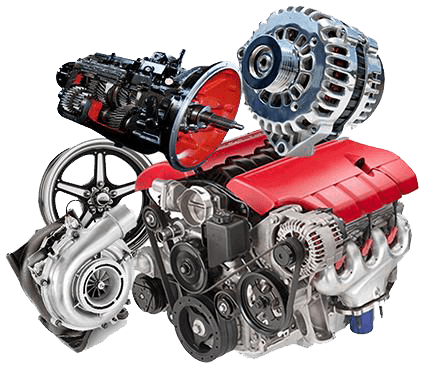Exploring the Inner Operation of a Compact Automobile's Engine System
As motorists, we commonly take for approved the detailed procedures that occur within the boundaries of our automobile's engine system. The compact yet complicated equipment that propels us forward is a marvel of engineering precision and sychronisation. From the controlled explosions in the combustion chamber to the precise timing of fuel injection, every element plays an important role in the smooth operation of the engine. In this exploration of a compact vehicle's engine system, we will certainly untangle the internal workings of this mechanical symphony, shedding light on the mysteries that drive us ahead on our everyday trips.
Combustion Refine Review
The combustion process in a portable automobile's engine system is a critical system that efficiently transforms gas into power to power the automobile. This process occurs within the combustion chamber of the engine, where fuel and air mix, fire up, and create controlled explosions. The combustion process consists of 4 main phases: consumption, exhaust, compression, and power.
Throughout the consumption stage, the piston moves downward, drawing in a mixture of air and fuel right into the combustion chamber. This descending activity produces the power required to drive the automobile. This cyclic burning procedure is fundamental to the operation of a small vehicle's engine system, making sure reliable power conversion for propulsion.
Piston and Cyndrical Tube Interaction

The piston's specific fit within the cylinder is necessary for preserving optimum compression and protecting against energy loss during combustion. Limited clearances in between the piston and cyndrical tube wall surfaces guarantee reliable sealing, permitting the piston to move smoothly without enabling gases to leakage past. Proper lubrication is additionally essential to decrease rubbing and put on between these parts, enhancing durability and efficiency.
Additionally, the design and materials utilized in making the piston and cyndrical tube impact engine efficiency and resilience. Modern engines commonly use lightweight yet resilient products like aluminum alloys for pistons and cyndrical tube linings to decrease inertia and enhance thermal efficiency. On the whole, the unified communication between the piston and cylinder is fundamental to the engine's performance and general efficiency.
Fuel Injection System Performance
Fuel injection systems in compact vehicle engines play a vital function in specifically supplying fuel to the combustion chamber for effective and regulated ignition. The gas shot system works by infusing gas into the burning chamber at the ideal minute throughout the engine's operation (opel corsa engine). This accurate timing ensures that the gas mixes evenly with the air for appropriate combustion, leading to enhanced fuel effectiveness and minimized exhausts
There are mainly two types of fuel shot systems made use of in portable lorry engines: port gas injection (PFI) and direct fuel shot More Bonuses (DFI) PFI systems inject fuel into the consumption port before the consumption valve, This Site while DFI systems infuse fuel straight right into the burning chamber. Both systems have their advantages, with DFI providing far better gas atomization and PFI providing an extra cost-effective remedy.
Understanding Engine Cooling Systems
Efficient operation of a compact car's engine counts greatly on the performance of its cooling mechanisms. The cooling system in a small lorry usually consists of a number of components functioning with each other to regulate the engine temperature. Comprehending these engine cooling mechanisms is essential for preserving the performance and durability of a compact car's engine system.

Exhaust System Components Explained
The optimal functioning of a portable lorry's engine cooling mechanisms relies on a complementary system referred to as the exhaust system, which consists of various crucial elements for ensuring efficient discharges and engine performance. The exhaust system consists of components such as the exhaust manifold, catalytic converter, muffler, and tailpipe. The exhaust manifold collects exhaust gases from the engine's cyndrical tubes and courses them to the catalytic converter. The catalytic converter then converts hazardous pollutants in the exhaust into less dangerous emissions prior to releasing them via the muffler and tailpipe.
One critical component of the exhaust system is the oxygen sensing unit, which keeps an eye on the oxygen levels in the exhaust gases to assist manage fuel usage and make certain optimum engine efficiency. opel corsa engine. Additionally, the resonator may exist in some exhaust systems to minimize sound degrees. In general, the exhaust system plays a vital role in keeping engine effectiveness, reducing unsafe emissions, and ensuring a quieter driving experience for small vehicle proprietors

Conclusion
In final thought, the small lorry's engine system is an intricate combination of elements that work with each other to help with the burning process, convert gas into energy, and expel waste gases. Comprehending the internal workings of the engine system, including the piston and cylinder communication, fuel injection system, engine cooling mechanisms, and exhaust system parts, is critical for maintaining ideal performance and efficiency of the car.
The burning procedure in a compact lorry's engine system is a critical mechanism that effectively converts gas right into energy to power the car.Fuel injection systems in small lorry engines play a critical duty in precisely delivering fuel to the click this combustion chamber for regulated and effective ignition.There are mainly two kinds of gas shot systems utilized in small car engines: port fuel shot (PFI) and straight gas shot (DFI) Recognizing these engine air conditioning devices is important for keeping the performance and durability of a small vehicle's engine system.
The optimum functioning of a compact vehicle's engine cooling systems depends on a corresponding system recognized as the exhaust system, which makes up different essential components for guaranteeing effective exhausts and engine efficiency.
Comments on “Opel Corsa Engine: Top Tips for Upkeep and Care”